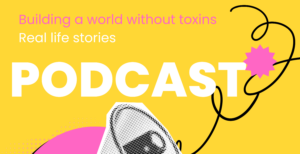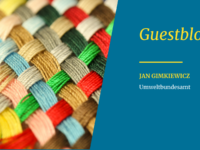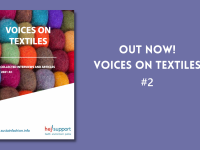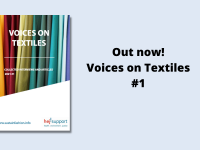Leather Alternatives

Annually, more than one billion animal hides and skins are used to generate leather.1 While the market for leather is extensive, the multiple adverse environmental impacts of leather production are severe. Deforestation, land overuse and biodiversity loss are all issues arising from the reallocation of land for the purpose of rearing livestock, which can also lead to carbon emissions and contribute to climate change.1,2 Additionally, the tanning phase of leather production releases toxic chemicals into the environment including water sources.2 These negative effects of leather production have caused leaders in the textile industry to develop alternative modes of production that are more sustainable.
To reduce the environmental impacts of the tanning process, luxury retailers have turned to tanning leather instead with plant extracts.2 While at first this may seem more sustainable, research has found that the difference in the water, carbon and energy footprints between vegetable and the standard chromium-based tanning processes to actually be negligible.3
To reduce waste generation, retailers may use recycled leather in their products.1 While recycled leather is a more sustainable alternative, it cannot be produced in volumes significant enough to fully take the place of newly produced leather. Therefore, there is an evident need for synthetic alternatives in the industry.
Traditionally, synthetic leather has been made from a mixture of polyvinyl chloride or polyurethane and cotton, nylon or polyester.4 While this type of synthetic leather has fewer adverse environmental impacts than animal-based leather, it is derived from plastics generated from petroleum; consequently, the biodegradation of these types of synthetic alternatives take an enormous amount of time and unfortunatley contribute to microplastics entering and polluting the environment.4
More sustainable alternatives to these plastic-based synthetic leathers are currently being developed. For example, the Mylo leather alternative produced by BoltThreads uses mycelium, which is the network of filaments that constitute mushrooms, as a base material.4 In addition to subverting the water and carbon dioxide emissions attributable to animal-based leather production, Mylo is also not petroleum-based.4 This textile is anticipated to hit the shelves of major retailers such as Lululemon, Adidas, and Stella McCartney later this year.4
Other sustainable leather alternatives emerging on the market make use of base materials as varied as apple peels, cactus fibers, cork and even pineapple leaves.1
All in all, leather alternatives represent a new frontier in sustainable fashion where innovation is breeding creative solutions to the environmental concerns produced by one of the most notorious textiles in the fashion industry.
References
- Opperskalski, S., Siew, S., Tan, E., & Truscott, L. (2020). Preferred fiber & materials market report 2020. Textile Exchange. Retrieved from: https://textileexchange.org/wp-content/uploads/2020/06/Textile-Exchange_Preferred-Fiber-Material-Market-Report_2020.pdf
- Common Objective. (2018, February 1). Fibre briefing: leather. Retrieved from: https://www.commonobjective.co/article/fibre-briefing-leather
- Laurenti, R., Redwood, M., Puig, R., & Frostell, B. (2016). Measuring the environmental footprint of leather processing technologies. Journal of Industrial Ecology. Retrieved from: https://upcommons.upc.edu/bitstream/handle/2117/111335/Laurenty%20et%20al_authors%20final%20draft.pdf
- Dalton, H., Fitts, M., & Hu, M-M. (n.d.). Textiles. The New Fashion Initiative. Retrieved from: https://thenewfashioninitiative.org/wp-content/uploads/2020/12/Textiles.pdf






